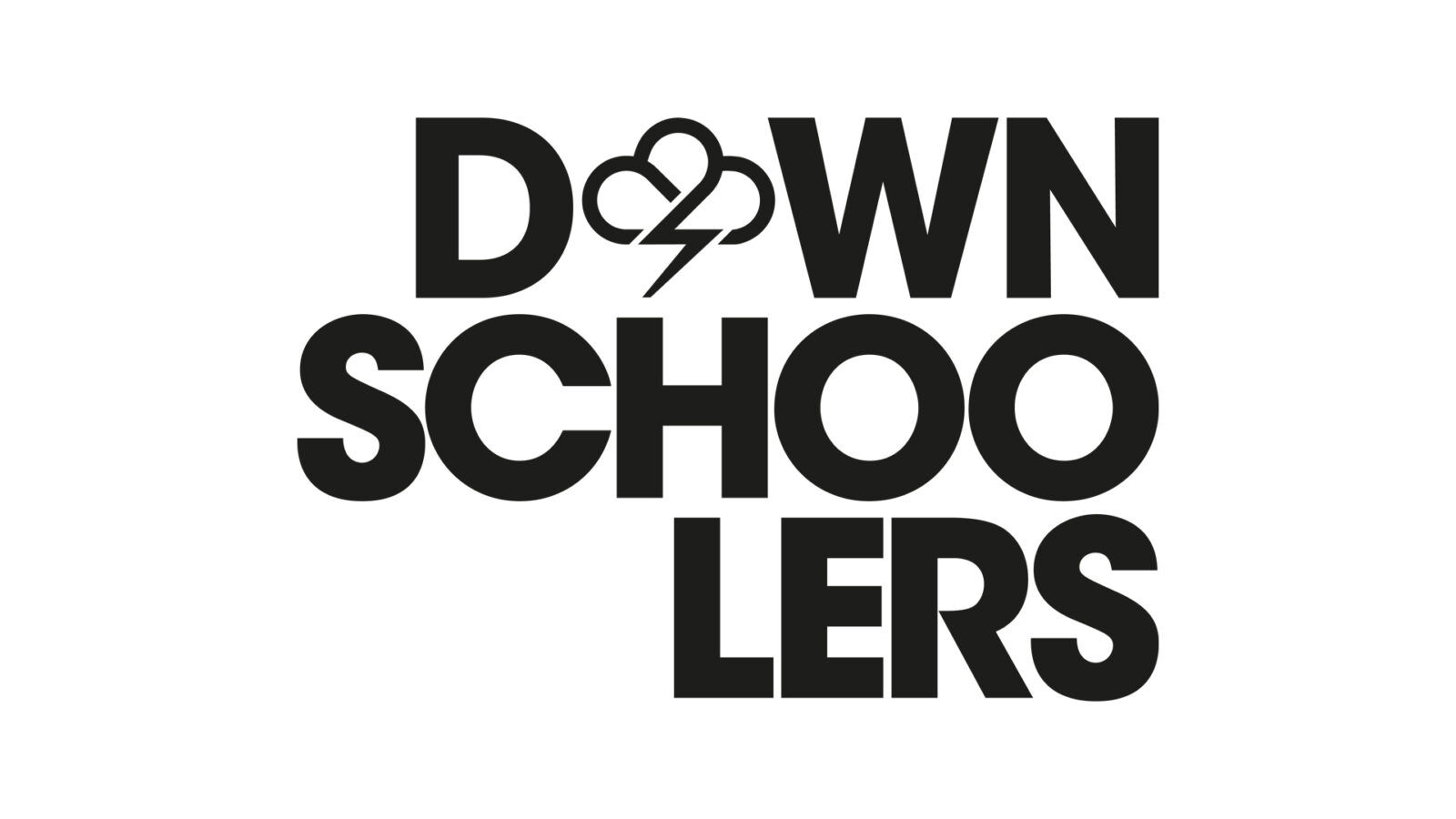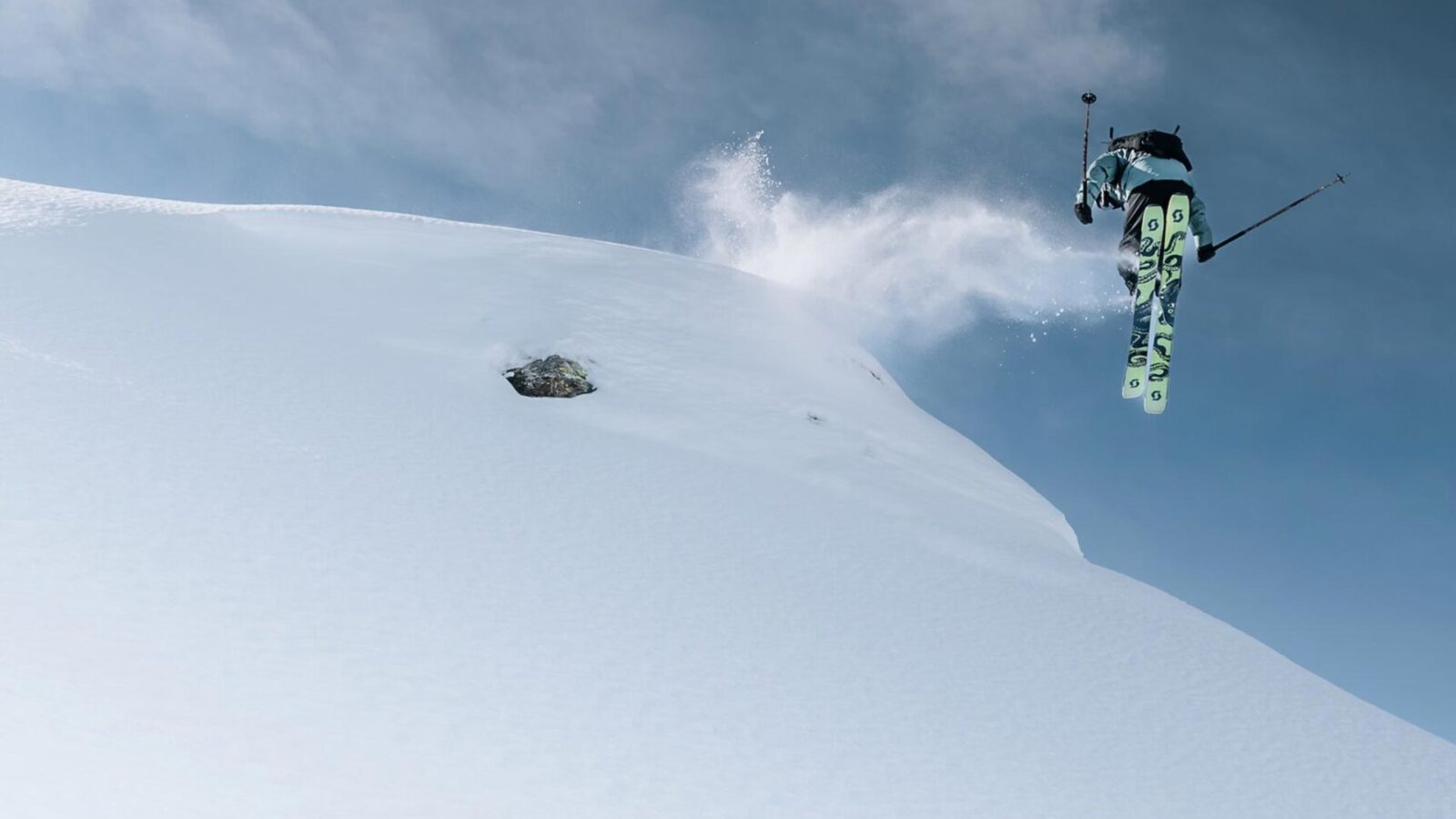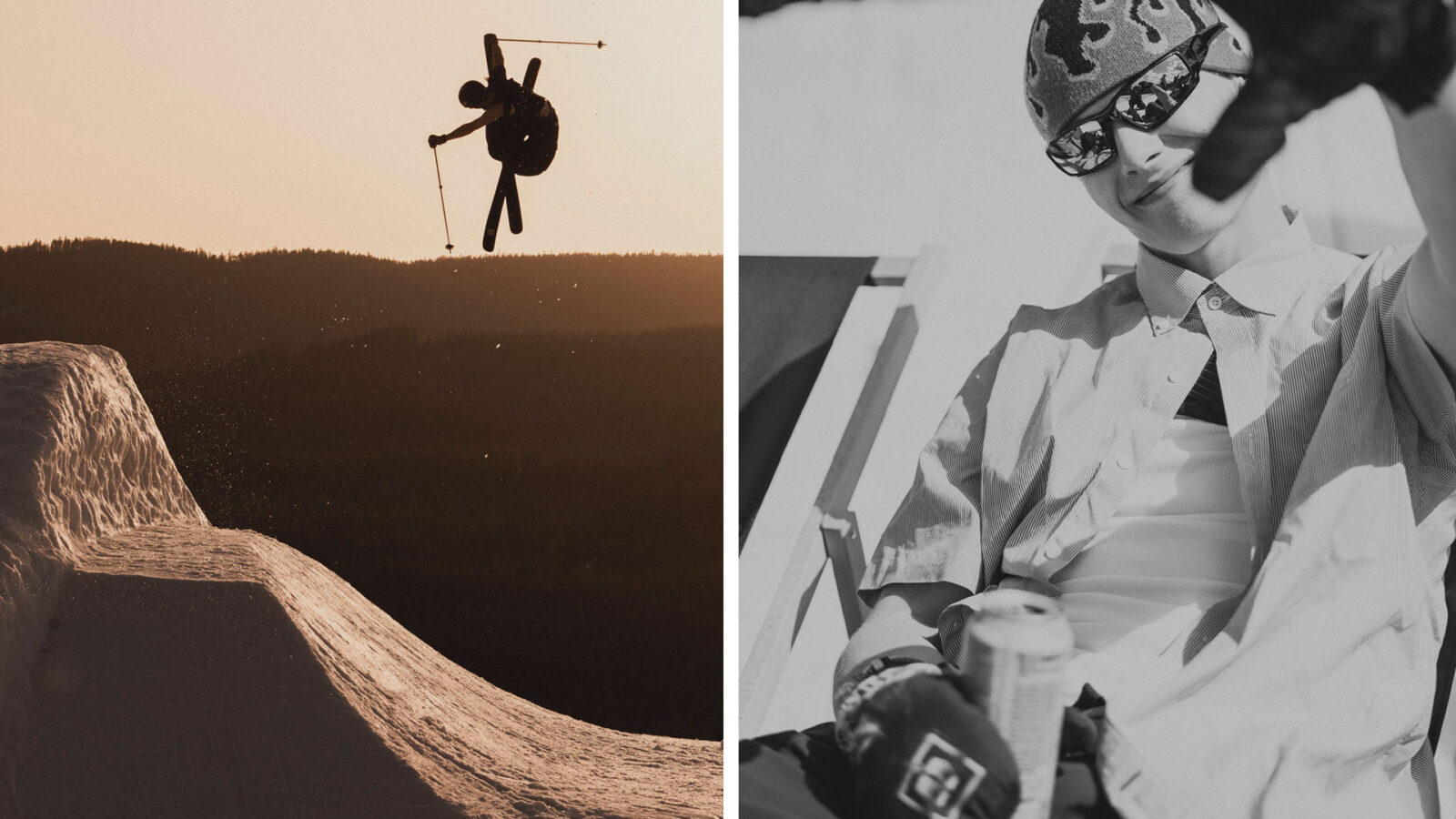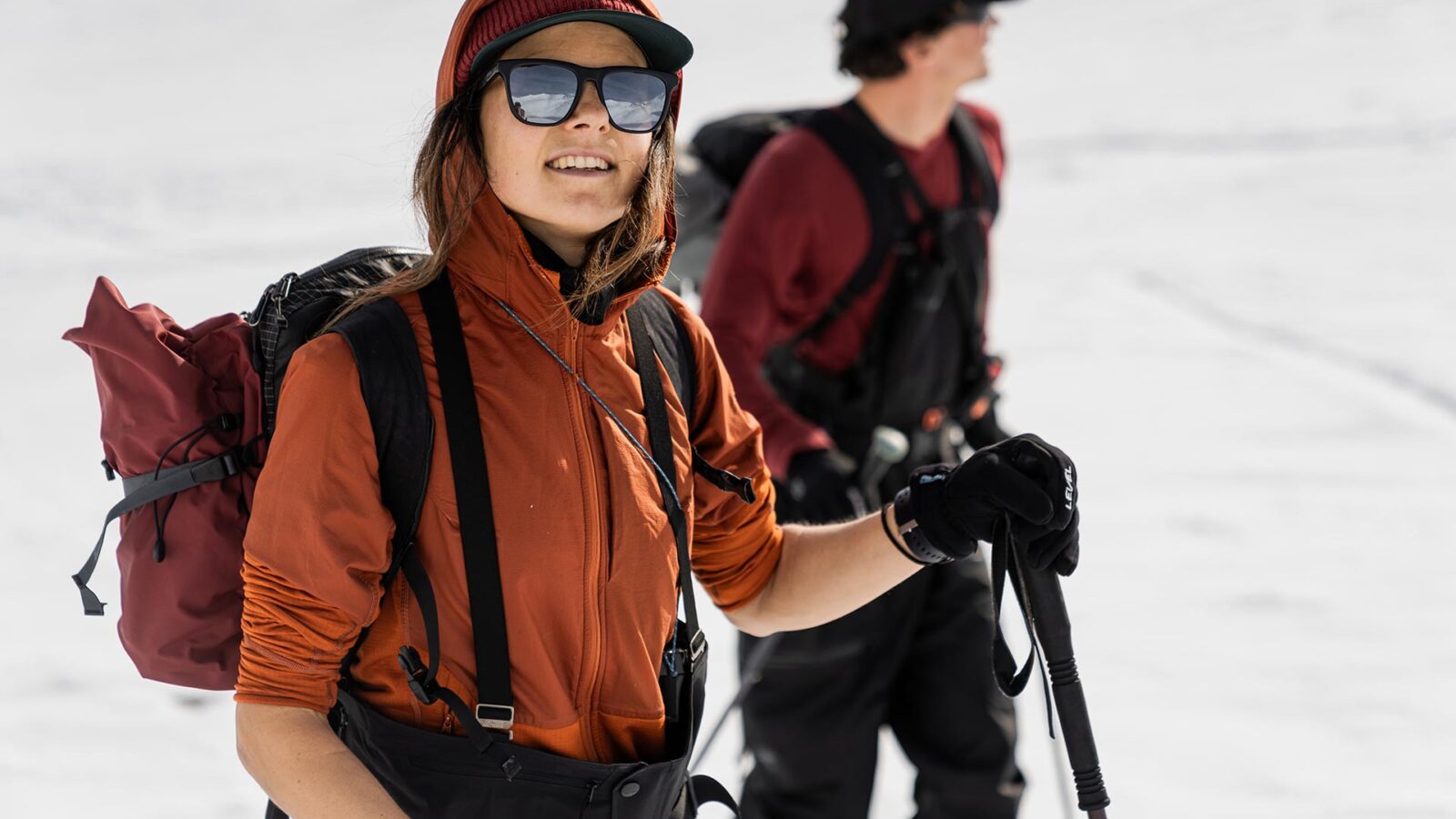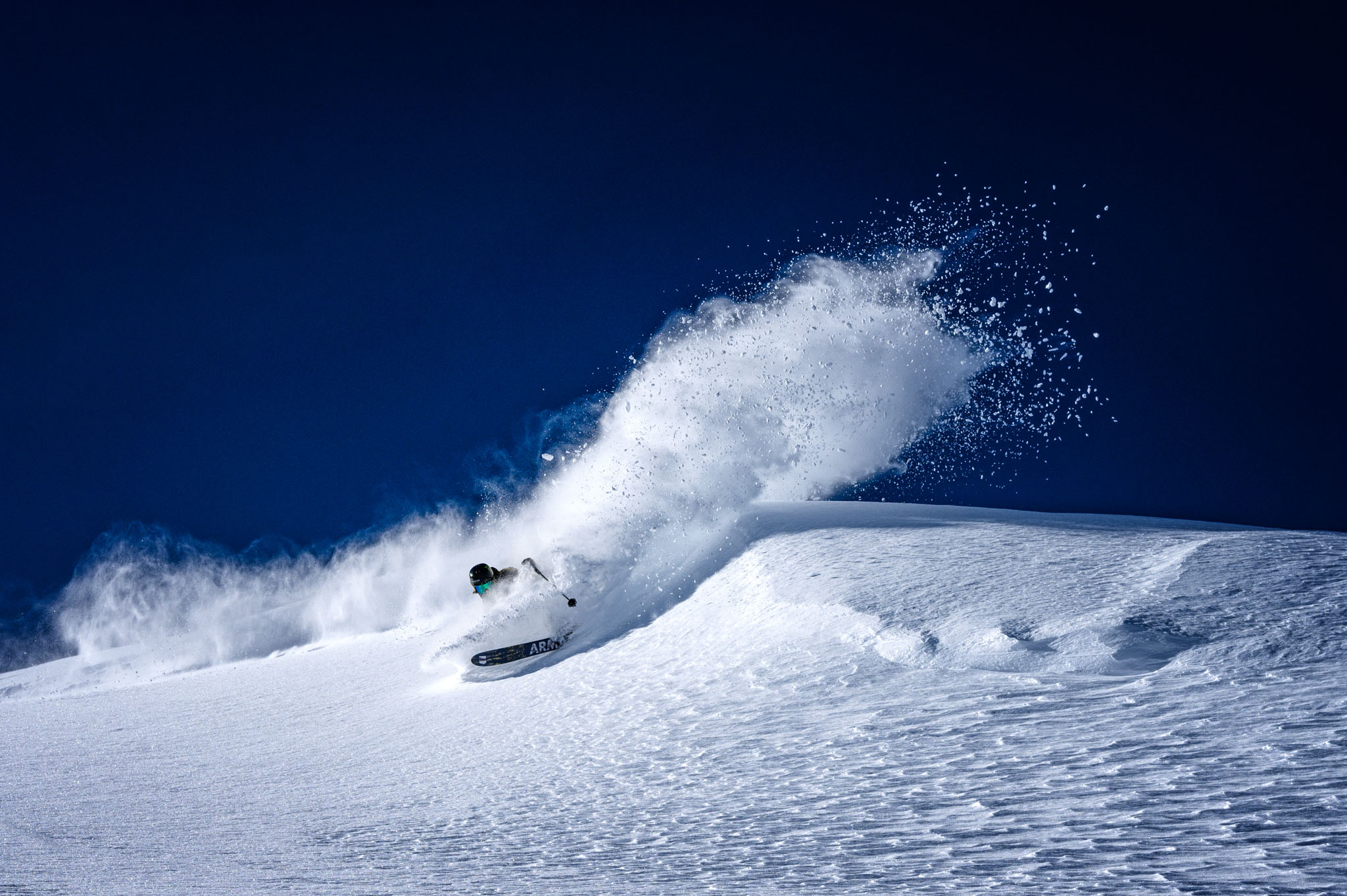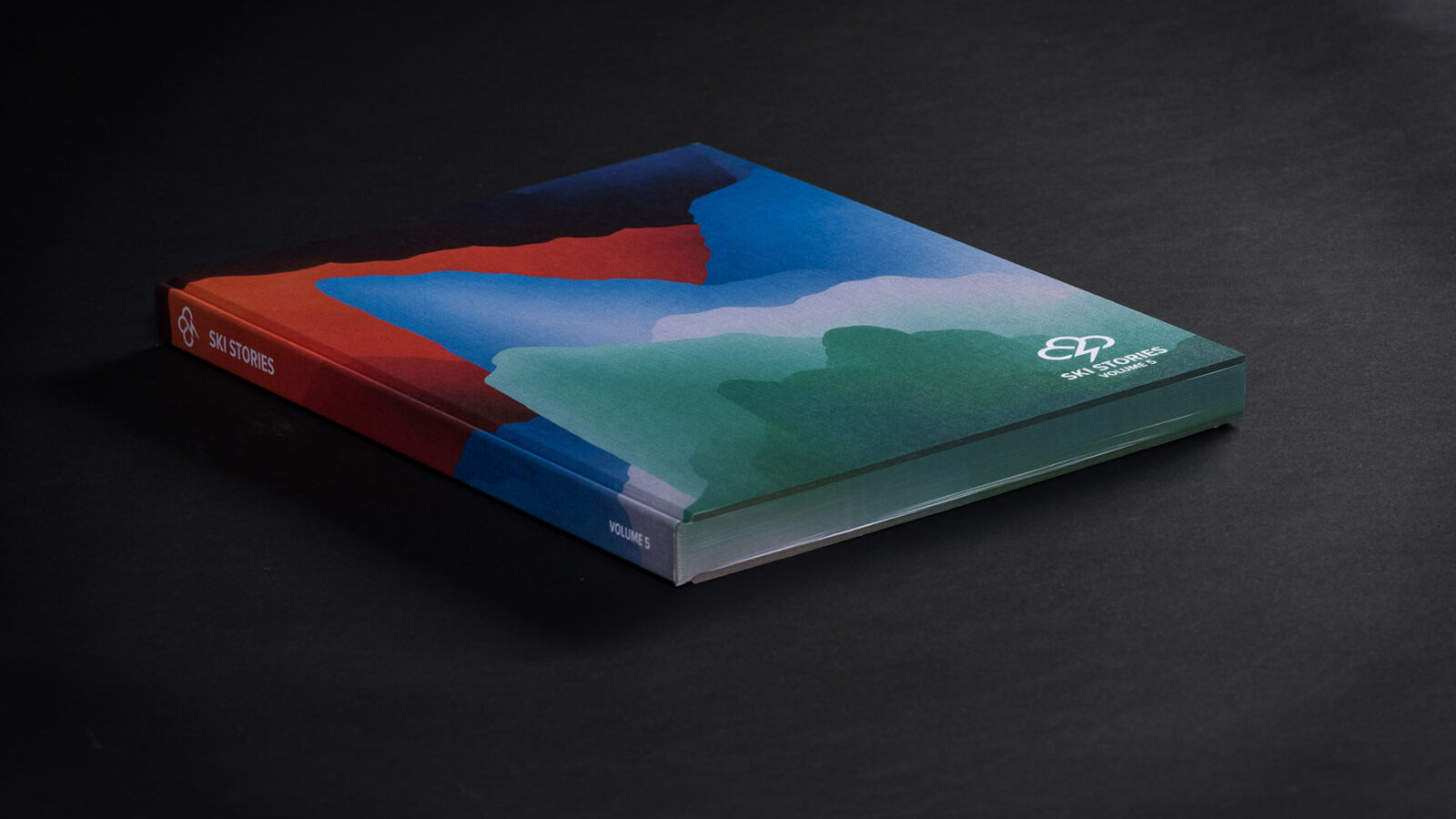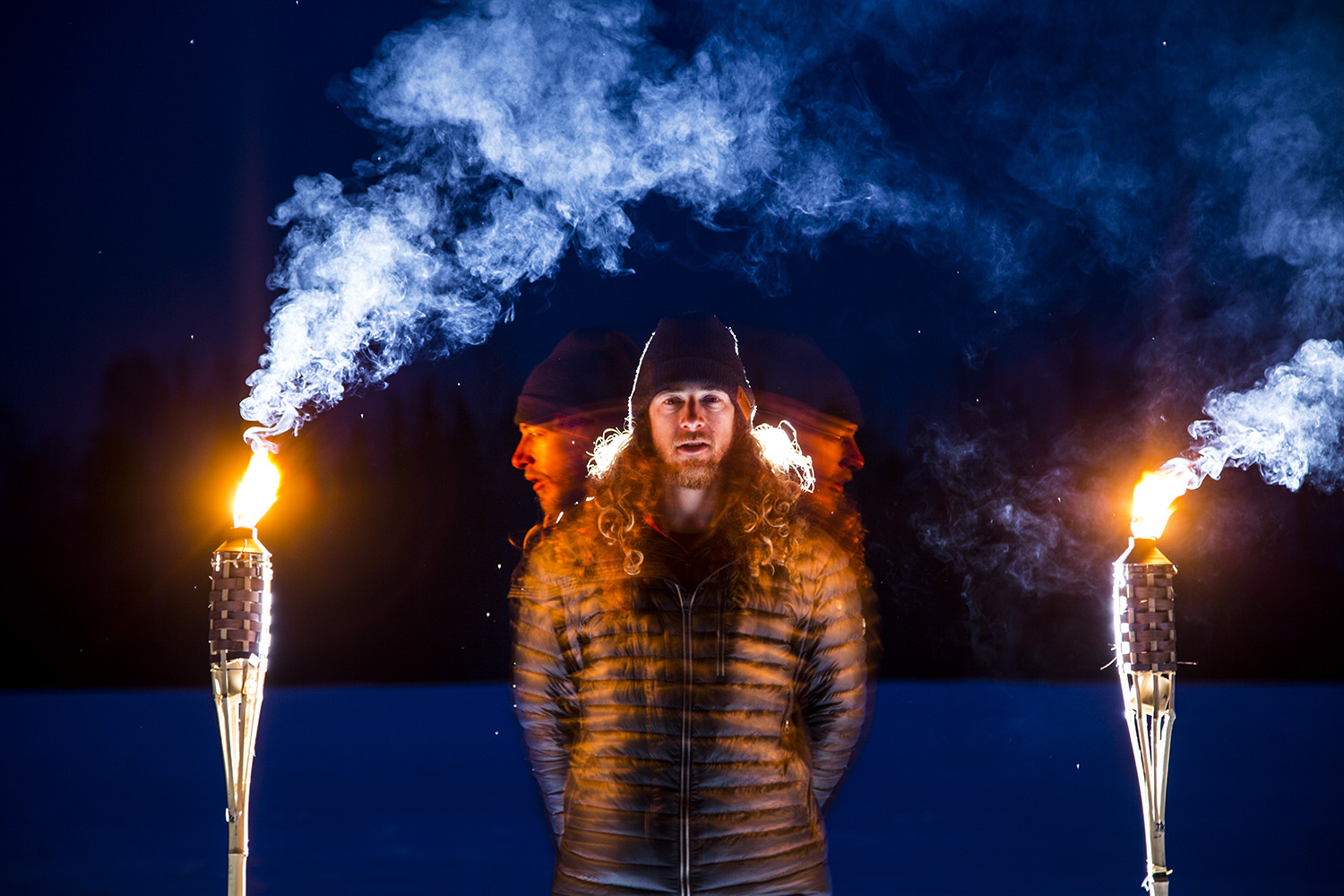
Stories
A Skier Called Sage (Downdays – February issue, 2016)
Meeting a man named Sage, one may expect a wise and calm philosopher. While Sage Cattabriga-Alosa is definitely an intelligent, well spoken human, he is also much more than that: a wild child, free spirit, artist and—as he is known in the ski world—a gnarly, hard-charging and creative skier. I caught up with the man who’s filmed boundary-shattering ski segments for over a decade during Red Bull Linecatcher to find what sage words he has to share.
Born: 27 December 1979 in his grandma's house in New Hampshire
Home: Bend, Oregon
Home Mountain: Alta and Snowbird, Utah
Interests: Mountain biking, skateboard dabbling, creating art, hobby DJ
Sponsors: The North Face, Atomic, Smith Optics, Backcountry.com, Sony Action Cam, Voke Energy Tablets

Interview: Mark von Roy
Red Bull Linecatcher is one of the only events you take part in, what makes it so special?
Combining backcountry slopestyle with a big mountain element makes it really special. Sixteen of the best all-round skiers in the world are invited here; you have to be a skier who can ski the whole mountain as well as be able to jump. Having the freedom to pick your run is rad; you can choose to hit completely natural features, hit the jump line or combine both. It is the ultimate backcountry slopestyle event, and every year they build such awesome features into a really fun venue. My favorite part of coming to these events is definitely getting to connect with all the other riders, especially some of the European skiers that I don’t really get much time to hang out with. The camaraderie between everyone is really amazing. Because there is a long weather window, we hang out multiple evenings in a row—go bowling and to the bar—and that really is a kind of team building. During the lay days we all shred the mountain together as a group having so much fun, and then during the actual event there is so much support among everyone. All the riders are fired up for each other and everyone is psyched when someone lays down a solid run. It’s a really cool group dynamic, and the event feels more like a soul shred session with a bunch of friends. The contest itself is run really professionally and the livestream is really well done, ensuring that it gets communicated to a larger audience. Although the livestream did bring its own problems because the timeframe is more limited, meaning the riders are not able to do as many runs and sometimes can’t perform at their absolute best. Nevertheless, it’s a really sick event and I am just psyched to be a part of it all.
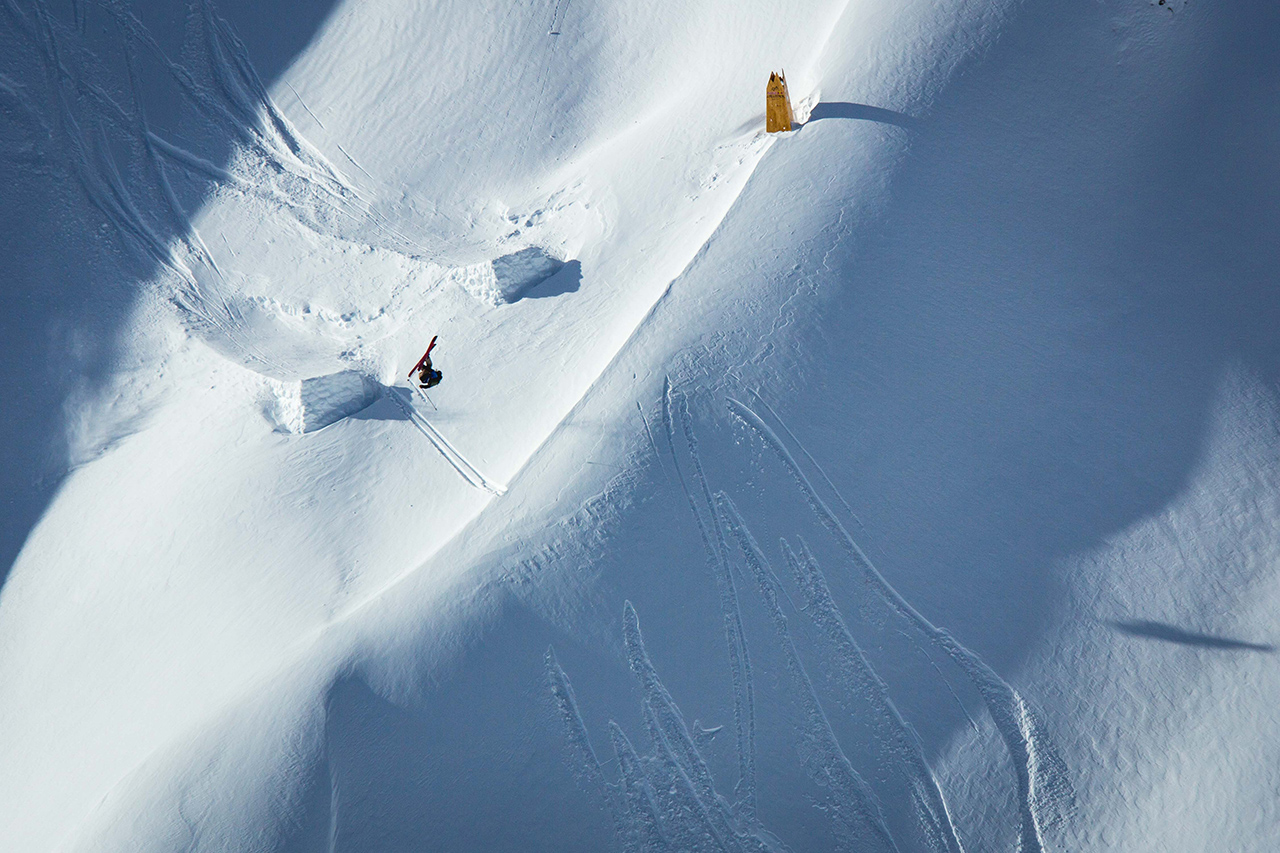
Sage floats a flat 3 at Linecatcher. Photo: Mark von Roy
Many skiers hail the Linecatcher format as the most representative of freeskiing as a whole, would you agree?
Yeah, there is also Red Bull Cold Rush and the Skiers Cup that have similar concepts. These events showcase skiing in the best way possible in my opinion: an ultimate gathering of the best skiers expressing their way of skiing. And it’s not easy to organize. You need a weather window, where you can wait for the best day and best snow. You need an amazing pool of riders and be able to let them warm up and get fired up for their run. The locations are often quite remote as well, which makes it difficult for live audiences, not to mention the whole media and event staff. For me as a film skier who isn’t really into competitions, these events are cool opportunities that push me in a different way. I am in a totally different headspace and the challenge is way different. It also really preps me up for filming. Usually when I am not filming or competing I ski pretty mellow at my home resort, which doesn’t really warm me up very much. These events are all about doing as many hits and tricks as you can in one run and that’s so sick! Having a zone prepped with three jumps and a bunch of natural features is really amazing. The runs that get laid down during competition would be some of the sickest runs in any movie as well. So the whole experience is really inspiring and really pushes me as a skier.
The media landscape for professional skiers has massively changed since your career started, the rise of social media possibly being the most impactful. What are your thoughts on this development?
I think social media has many really cool elements to it. For instance, I made a follow cam video with Pep [Fujas] at Alta in the early season. It wasn’t really planned, we were just skiing together and I threw the camera on and followed Pep for a fun run doing straight airs. I posted it that night, because I thought why not? The next day this local ripper, Andrew Pollard from Alta, saw the video on social media and recognized the run. He called up his friend Mark and literally the next day they scoped the line, found better ways to hit it, filmed them tricking the features and taking new and gnarlier lines. Basically they one-upped our video. I saw their better video in Instagram and was like “holy shit!” and spread the video, because it was super rad. I think these kind of organic, cool interactions that you can have through social media are really awesome. On the other hand, the darker side of social media is how companies use it and how some athletes are contractually obliged to make certain posts for their sponsors. Some people are great skiers but not so great at social media; they can be overshadowed by people that aren’t necessarily the best skiers but are really good at social media. I guess from one side that’s ok, because each person has their ability to get in where they fit in and if social media is your way of being a pro skier, then that’s cool. I mean, I get it and I am also playing the game.
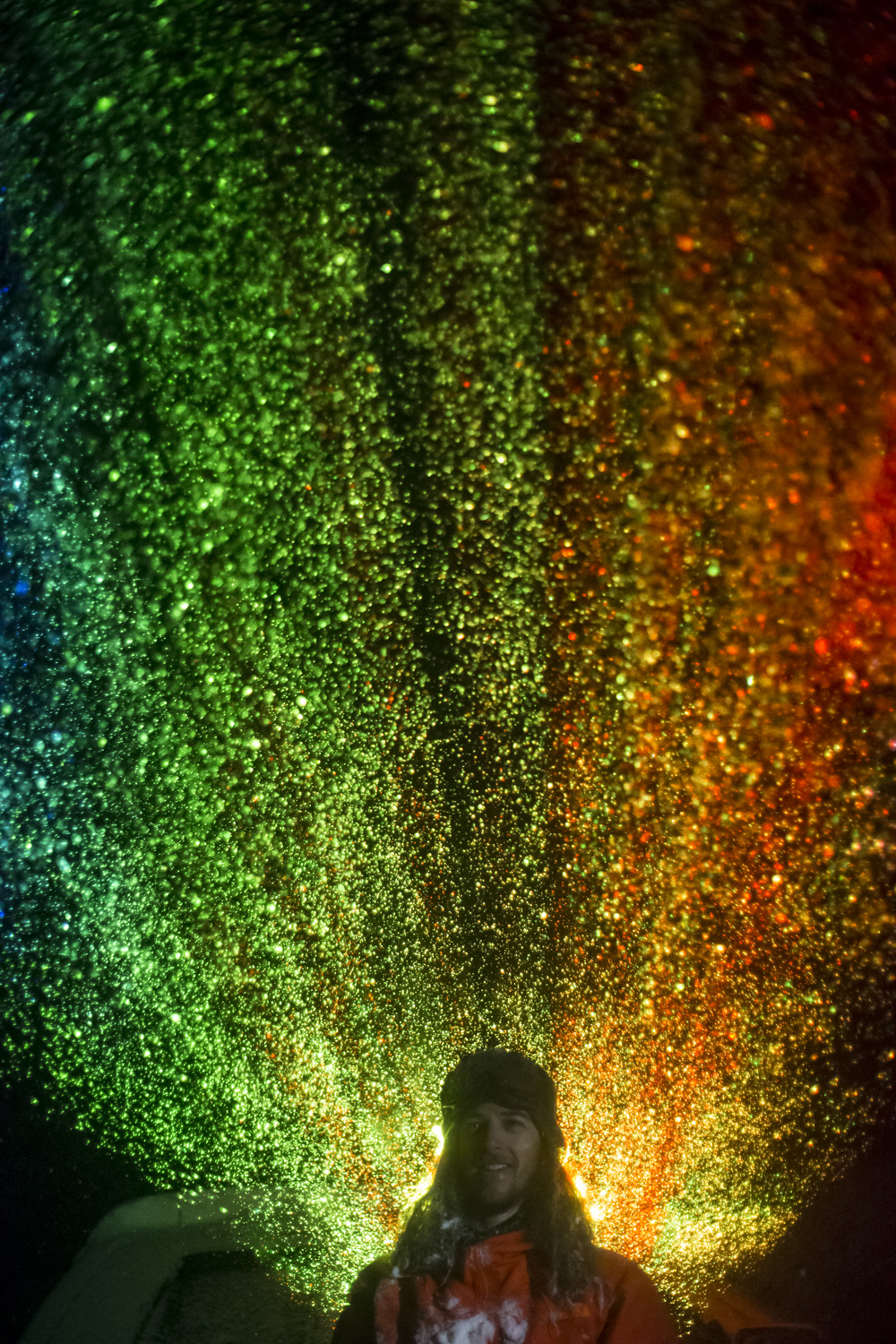
Projecting an aura. Photo: Adam Clark
Yeah social media is part of the game now, but I think film segments still have the biggest impact. You have had a long, successful career as a professional film skier, how has your approach to filming changed over the years?
Recently I have gotten a lot more interested in the production itself. I like having an influence on the logistics, production and direction of the filming that I am part of. As I move forward, I am more interested in being a part of a production as a whole. I still feel confident that my skiing in front of the lens is worthy to be a part of all that; but I guess I just want to be more involved. Each project that I am involved in is something that I am really passionate about. I would rather be involved 100%. Each year I try to set up little goals for media that I would like to generate. I really enjoy making something that is engaging; showcasing my skiing in a way that the average skier can relate to. For example, a resort edit can be more impactful than the heavy, freak-show shit that we do in Alaska. I love both, but I think a lot more people can relate to resort skiing because not a lot of people can go to Alaska to ski spines. It’s amazing to look at, but hard to connect with; so its nice to put something out there that’s a little different and more relatable.
You express lots of creativity in the way that you ski natural terrain, but you also get creative away from the mountains. What are your inspirations and outlets for creativity apart from skiing?
Visual art has been a big influence on my life ever since I was a kid. In college I studied fine art and loved the creative process, the experience of working in new mediums and the excitement that happens in those moments. After skiing took over my life, art took a back burner for a while, but over time I found new mediums to work in. The computer with a Wacom tablet that allows for painting, drawing and design on the digital plane opened up that creative outlet again. It allowed me to have a studio anywhere I could set up a laptop. This has come full circle and brought opportunity to work with the brands that support me, from designing ski graphics with Atomic; tees, hoodies, and backpack art with The North Face, to having a signature goggle with Smith. Fusing these passions has been a rewarding experience for sure.
Filmography
With Teton Gravity Research
Paradise Waits (2015)
Almost Ablaze (2014)
Way of Life (2013)
The Dream Factory (2012)
One for the Road (2011)
Light the Wick (2010)
Re:Session (2009)
Generations (2009)
Under the Influence (2008)
Lost and Found (2007)
Anomaly (2006)
Tangerine Dream (2005)
Soul Purpose (2004)
High Life (2003)
The Prophecy (2002)
Salad Days (2002)
Subject to Change (2001)
Mind the Addiction (2001)
With Others
Chasing Shadows (2015) – Warren Miller
Playground (2007) – Warren Miller
Teddy Bear Crisis (2005) – Kris Ostness
Ten (2004) – Poor Boyz
Not Another Ski Movie (2004) – Push Films
Stimulus (2004) – Rage Films
Junkshow Diaries (2003) – Rage Films
Forward (2003) – Level 1 Productions
The Flying Circus (2001) – Wind Up Films
The Bolero Project (2001) – Wind Up Films
Awards
Best Male Performance, Powder Video Awards (2015)
Best Powder Segment, PVA (2014)
2nd Freeskiing World Tour, Snowbird, Utah (2013)
Best Powder Segment, Powder Video Awards (2013)
3rd Red Bull Cold Rush (2012)
Best Male Performance, PVA(2011)
Best Natural Air, Powder Video Awards (2011)
2nd Red Bull Cold Rush (2011)
Best Male Performance, PVA (2009)
Best Male Performance, PVA (2004)
You also brought your creativity to the “Experience Sage” project, which was super impressive. Can you tell us a little bit more about the whole project and your involvement?
The project started as an idea many years ago. I was chatting with a music producer friend, who also worked in video projection/mapping; he and I brainstormed the idea of projecting onto snow. I started to get into video mapping and projection on my own and decided to give it a go. As I mentioned earlier, art has always been a big part of my life, and while skiing is a creative endeavor, this was a way to combine art and skiing in a big way. Adam Clark and I started experimenting and shooting using art I had created and a small office video projector. We got some cool shots, but I knew that there was more to be done. The following year I pitched the idea to The North Face and with some added support we started shooting with TGR, this time with a commercial projector and a full on TGR production crew. I would set up the projector, curate the imagery, map its position on the hill, then the film crew and I would talk back and forth about color, light, content, and finally I would start skiing. A set up would take anywhere from 15 minutes to an hour or more for each shot. After eight long nights of shooting including one night where it snowed 18 inches during the shoot, we had some pretty awesome shots. Because we were still working on a bare bones budget, and the logistical challenges were immense, everything ended being on a smaller scale than the vision had originally entailed, but we were still very happy with the results. The shoot was at Grand Targhee, the ski area that I grew up skiing and many people came out of the woodwork to help; friends I had grown up skiing with, patrol and management at the ski area. Without that support things would have been far more expensive and challenging.
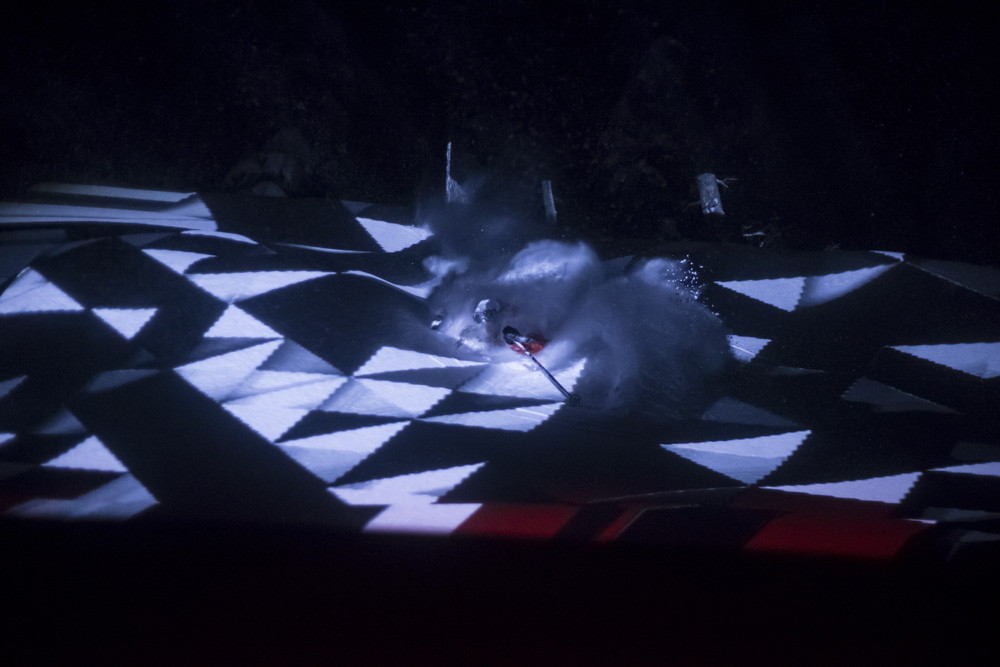
Sage, experiencing deep powder. Photo: Adam Clark
For more than a decade we have witnessed you shredding Alaska to pieces; what makes it such a special place to ski and what advice would you have to first-timers heading there?
Alaska is special is because of a combination of things. The proximity to the ocean, the scale of the mountains and vastness of space all contribute to its magic. The type, quality, and amount of snow that falls allows it to stick and form amazing features that are rarely seen anywhere else. For someone new, rolling into a place of such scale can be overwhelming. The best advice I can give is to start small, and build confidence with the perspective. Scale, even after many years, is always something I work on to understand. Taking good photos for ridge-top review always helps build your comfort and when looking for airs, even small-looking rocks can provide big drops. Because of the steepness, a one-meter rock can launch you 10 meters down the mountain. Starting with little airs will help feel out the reality of the ones that look big.
If I ever find myself standing on top of an Alaskan peak I will keep that in mind. Thanks so much for your time Sage and good luck for the season!
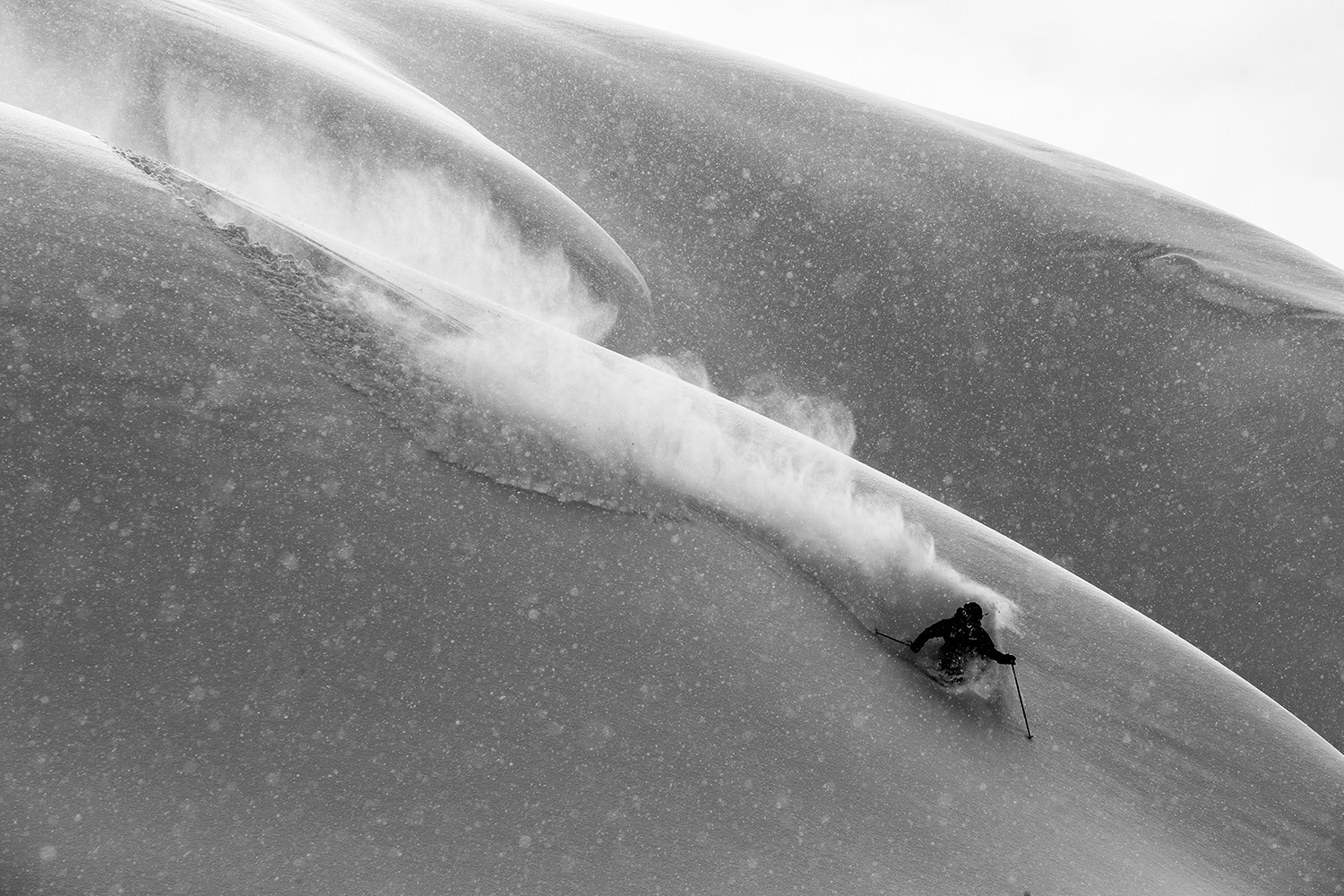
A deep day in Alaska´s Neacola Mountains. Photo: Adam Clark
